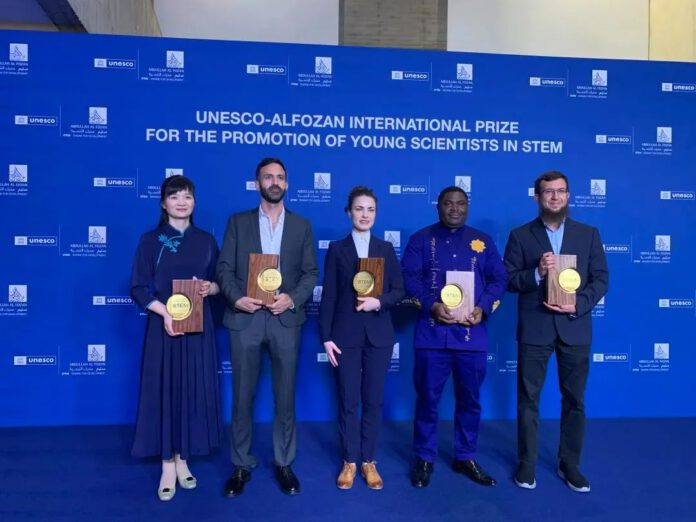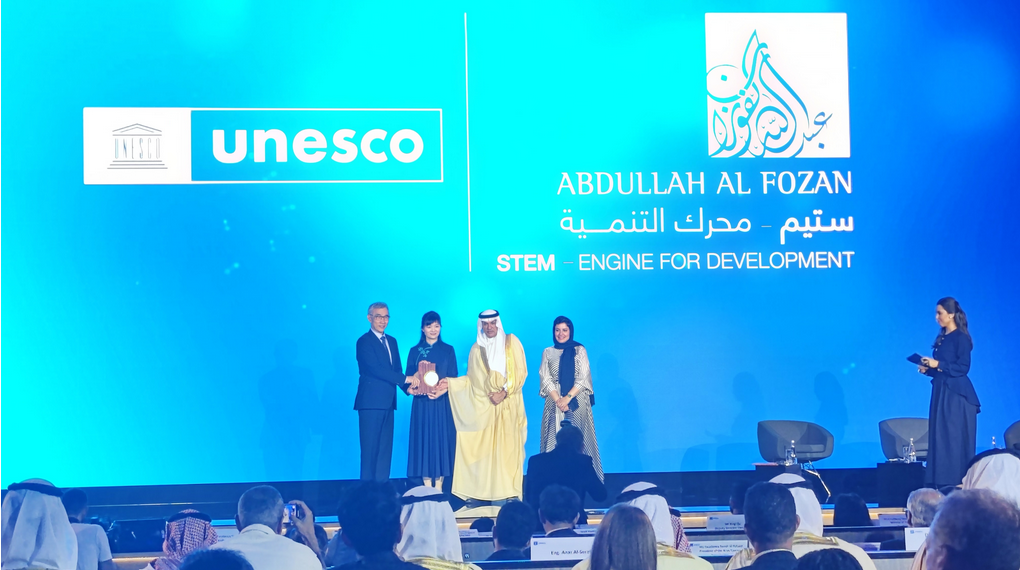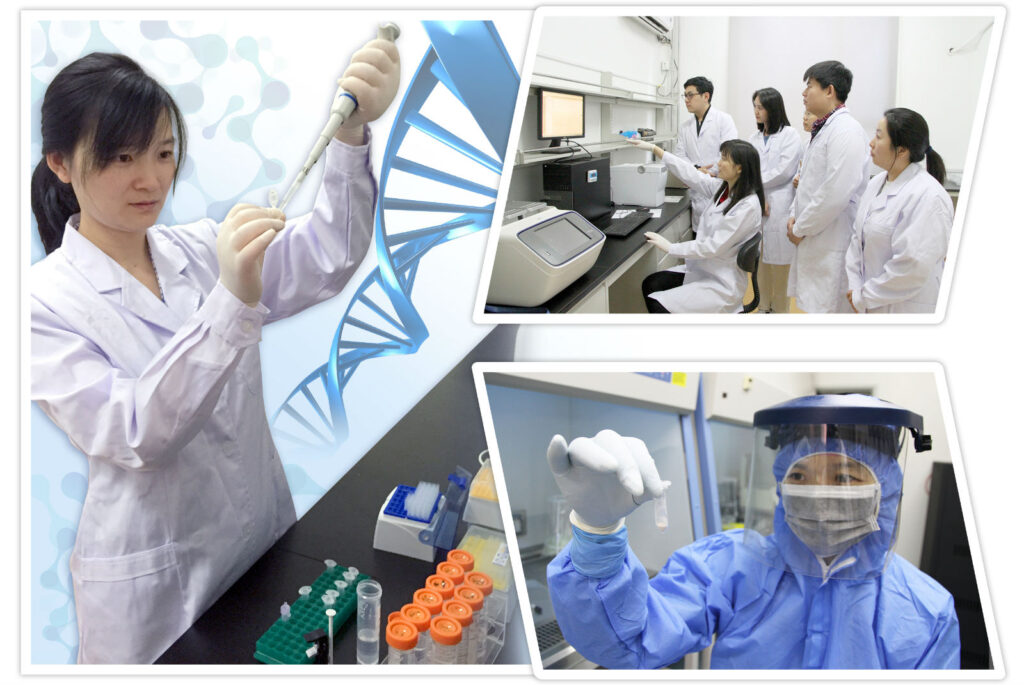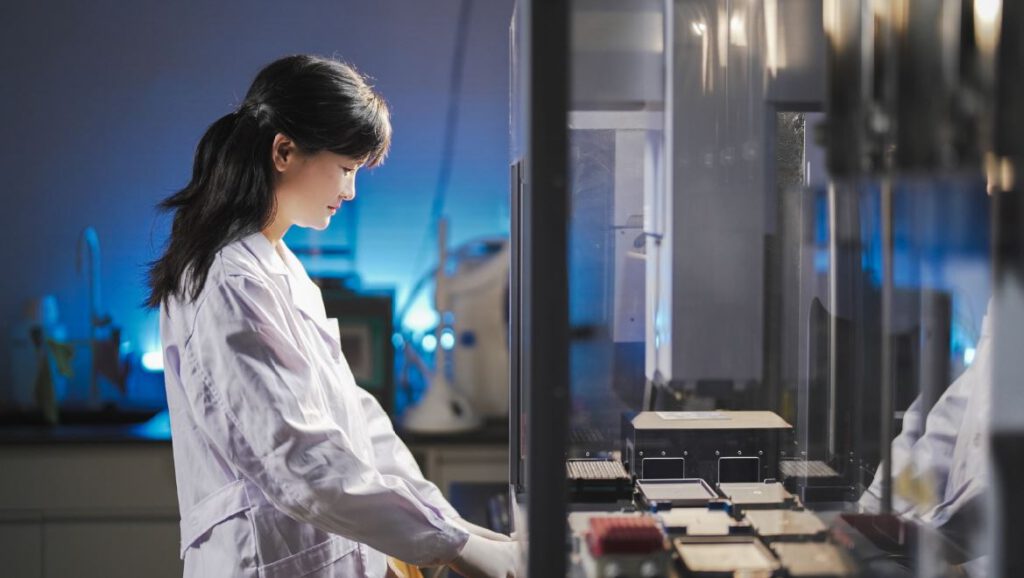
On June 19, 2023, Chinese archaeogenetics scientist FU Qiaomei from the Institute of Vertebrate Paleontology and Paleoanthropology at the Chinese Academy of Sciences was awarded the UNESCO-Al Fozan International Prize for Outstanding Young Scientists in Science, Technology, Engineering, and Mathematics (the Al Fozan Prize) at UNESCO headquarters in Paris, France.
The Prize is the first international prize established by UNESCO since 2022 to promote the work of young scientists in STEM (Science, Technology, Engineering, Mathematics) fields and is awarded every two years to five young laureates working in STEM fields. The award recognizes and rewards the achievements of scientists at the national, regional, and global levels that contribute to capacity building, scientific career development, and socio-economic development, thereby promoting education, scientific progress, scientific popularization, and international cooperation in STEM fields.

Fu has long been engaged in archaeogenetics research, focusing on ancient DNA to explore important scientific questions about human origins and evolution. The prize is awarded in recognition of her important and original work in constructing the genetic history of early Eurasian populations through ancient genomes, which has brought new insights into human health and adaptation from an evolutionary perspective.
From ancient times to the present, the exploration of early civilizations and human evolution has not stopped, and ancient DNA research has opened a new window for cracking the code of civilization.
DNA is very easy to contaminate, and the decay of animals begins after death, and the natural chemical nature of DNA determines that it is easily degraded. Long strands of genes are degraded into small fragments, and the longer the time, the shorter the fragments become, and gene sequencing is to put these small fragments back together.

Paleogenomics research is an emerging discipline that did not open up until the early 21st century. By sequencing ancient DNA such as DNA fragments from ancient times that have survived in fossils, mummies, tombs, and even in the soil of ancient ruins,it is possible to map ancient genomes and compare the full genetic profile of present-day humans to identify ancient human races.
Driven by rapid technological changes, human ancient DNA research has been growing year by year and is experiencing a period of growth. According to Clarivate, a bibliometrics analytics company, in terms of the overall number of publications and trends of research papers and reviews on human ancient DNA research topic, the United States, European countries represented by the UK, Germany, France, Italy, and Australia published more relevant papers, while the number of publications in China was only in single digits before 2017, but has increased in recent years, climbing to the 5th place by 2021.
As one of the leading scientists in the field of paleogenetics, Fu was selected as the first Chinese scientist to receive this award out of 2,500 candidates from all over the world, winning acclaim and significant international influence for China in the field of science and technology innovation.
Archaeogenetics research has had a significant radiative impact, not only on genomics but also on tracking the evolution of human physiological traits and controlling disease risk. Understanding the human paleogenomics can help physiologists and geneticists to better understand and uncover the physiological functions of modern humans, such as the tracing of functional genes, and the analysis of the genomes of ancient animals and pathogenic microorganisms to grasp the risk of human diseases and the genetic factors of adaptation to some specific environments, and to clarify the evolutionary development of diseases and physiological functions in modern humans.

In 2017, Fu’s team obtained the genome sequence of the oldest modern human from China and East Asia from the 40,000-year-old Tianyuan Cave fossil in Beijing, China. The analyzed data show that the ancient East Asian populations represented by them were genetically linked to an ancient European population during the same period, opening the first East Asian chapter in the genetic history of the entire Eurasian continent.
In 2020, her team studied the mitochondrial genomes of the Qinghai-Tibetan Plateau population for the first time in 5000 years, revealing a small population movement from low to high altitudes and the expansion of the population within the high-altitude region in the subsequent period. In the same year, her team published the 11,000-year-old human paleo mitochondrial genome in southern China and a large-scale systematic paleo genome study of the northern and southern populations in East Asia since 9,500 years ago, showing the complex history of frequent migratory interactions between the northern and southern populations in East Asia over 10,000 years, the connection between the southern island-speaking populations and the southern inland paleogene, and the continuous outward dispersal and exchange through the coastal zone.

In 2021, her team conducted another large-scale paleo mitochondrial genome study on the Shandong population and the Yangshao site in Henan, China, to reveal the genetic continuity of their populations since the Neolithic.
These studies have not only filled a huge gap in the East Asian human paleogenomics in time and space, but also uncovered previously unknown genetic links between East Asian populations and other populations in Eurasia and the important role of migratory interactions in their evolution, and resolved the tens of thousands of years of genetic history of the northern East Asian populations from the Tianyuan Cave people 40,000 years ago to the ancient northern coastal populations nearly 10,000 years ago.
Over the past decade, Fu and her team have developed key ancient DNA technologies and made many major international discoveries on the genetic characteristics of early Eurasian humans, the genetic exchange between populations, and the history of migration and dispersal, such as deciphering the genome of the world’s oldest modern humans in East Asia, unlocking the mapping of Eurasian populations during the Ice Age, systematically mapping the dynamic genetic history of East Asian populations over 40,000 years, and uncovering the adaptive evolutionary characteristics of modern humans in East Asia. She was named one of Nature’s Top Ten Stars of Science in China for the importance of his research.
Source: Chinese Academy of Sciences, Institute of Vertebrate Paleontology and Paleoanthropology



